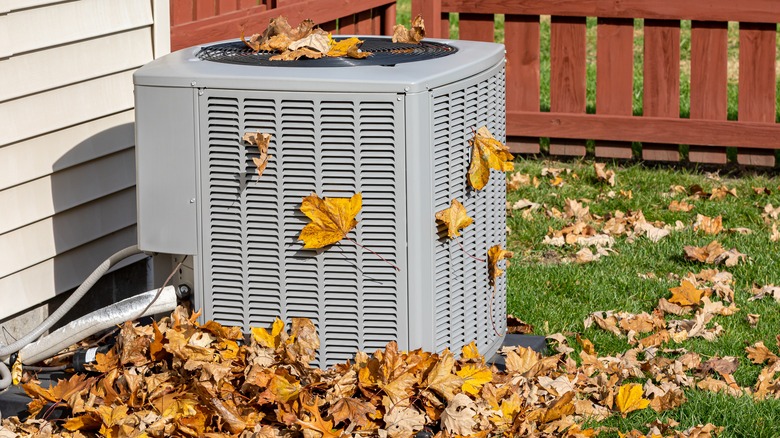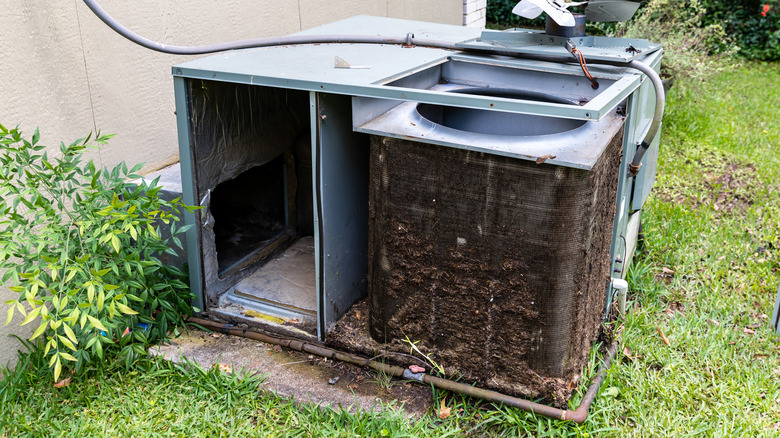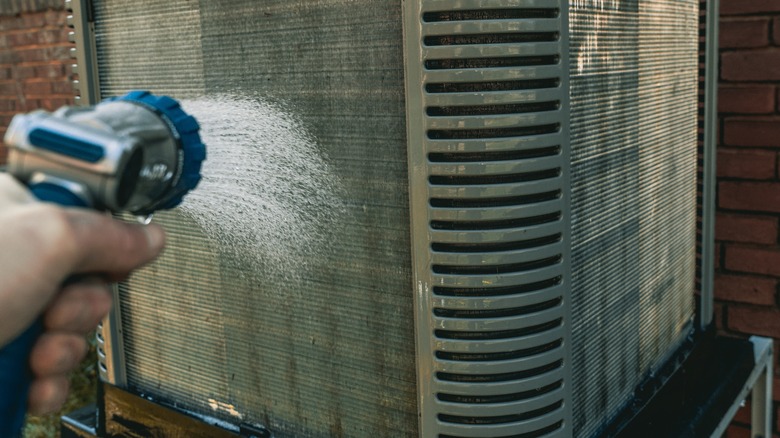Here's How Often You Should Be Cleaning AC Coils
Cleaning AC coils doesn't sound like a lot of fun, but doing so at least once a year can help ensure proper airflow to your system, ultimately leading to a more comfortable home that costs less to cool. These coils, including the outdoor condenser coil, are prone to debris and dirt buildup from the elements. The coils need to be able to easily pull in air to your air conditioner to be cooled and circulated throughout the house, and debris makes that hard to do.
All of those small bits of debris lodge themselves deep into the coils, limiting the flow of air and creating a scenario where your system needs to work harder to get results. Over time, without proper cleaning, a thick matting of material can cover some or all of the condenser, and that can lead to a failure of the air conditioner itself, requiring a professional to repair or replace that component. Cleaning it could help avoid some of that risk.
Though you can call a professional to handle the cleaning of your AC coils for you as a part of your annual system inspection and preventative maintenance call, you can also clean them yourself with a bit of proper preparation and safety-focused attention. Doing so does not necessarily take long, but spending that time can help to reduce your energy costs, potentially reduce some of the wear and tear on the system itself, and provide you with a cool, comfortable home.
Signs it's time to clean the AC coils
Aim to clean AC coils at least one time a year, but there are some reasons to do so more often. The best time to tackle this job is in the spring, especially if you live in a cold area where material buildup over the winter is likely significant. There are some signs that you should clean the coils more often.
A visual inspection of the condenser coils is often a good starting point. If you notice they are dirty, with dirt, leaves, sand, and other material lodged within the edges of the coils or covering the exterior filter-like screen, that's an indication the system cannot pull in enough air. Material buildup, even just leaves, makes it hard for air to pass through the system.
This often leads to more complex concerns, such as the air conditioner losing its ability to cool the home properly. You may notice your energy bills are on the way up or your home's system is working, but it doesn't feel as cool as it used to. In some situations, frost can develop on the AC because it cannot pull in enough air. That frost leads to a loss of heat transfer in the air and eventually will cause the system to fail.
Properly cleaning AC coils
When possible, hire a pro for this job, but if you plan to do it yourself, there are a few things to remember about how to clean AC coils. Don't remove any covering from the AC coils without turning off the breaker to the system and then unplugging it from the wall. If possible, test to ensure there's no power going to the AC before doing anything else.
Pull away any leaves or material from the exterior using your hand. Avoid using a brush or broom to do this. Then, use a hose with the least amount of pressure possible to rinse down the exterior of the condenser cooler. Too much pressure could bend the delicate blades and coils, creating a potentially expensive AC repair. Work in a top-to-bottom fashion, simply moving the hose along the coils to help encourage dirt removal.
If this isn't enough to clear them, turn to a professional for proper cleaning. The key to remember here is that you shouldn't apply any pressure to the coils, which means you should never try to brush them clean or use a power washer on them.
Also, once cleaned and functional, aim to keep the surrounding area free of trees or branch overhangs since this increases the amount of debris in the area. Talk to your HVAC technician about measures to prevent buildup like this again, such as a regular cleaning schedule, especially in high-dust areas.


